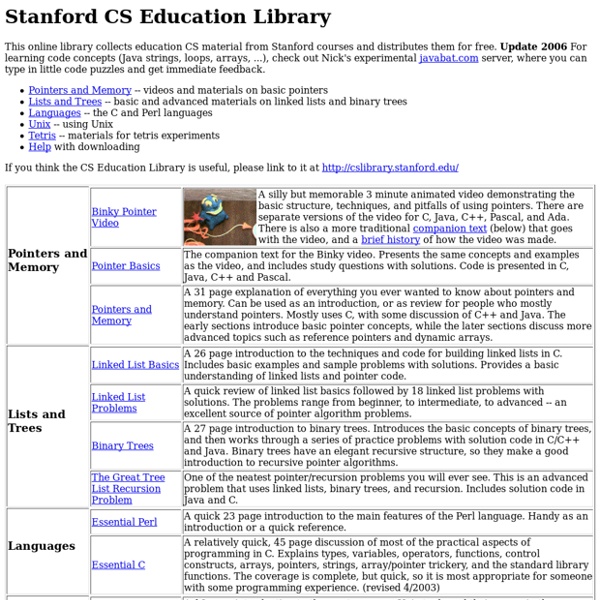



FilePermissions Understanding and Using File Permissions In Linux and Unix, everything is a file. Directories are files, files are files and devices are files. Devices are usually referred to as a node; however, they are still files. All of the files on a system have permissions that allow or prevent others from viewing, modifying or executing. To change or edit files that are owned by root, sudo must be used - please see RootSudo for details. If the owner read & execute bit are on, then the permissions are: -r-x------ There are three types of access restrictions: There are also three types of user restrictions: Note: The restriction type scope is not inheritable: the file owner will be unaffected by restrictions set for his group or everybody else. Folder/Directory Permissions Directories have directory permissions. read restricts or allows viewing the directories contents, i.e. ls command write restricts or allows creating new files or deleting files in the directory. Permissions in Action chmod with Letters
Introduction to Algorithms - Massachusetts Institute of Technology Readings refer to chapters and/or sections of Introduction to Algorithms, 3rd Edition. See the table of contents. Linux File Permissions Tutorial December 14, 2011By Roman Rafacz What we’ll cover in this article is how to identify permissions for files & directories and how to change them, as well as changing ownerships, groups, etc. Depending on what you want to do, you’ll want to make sure you have the appropriate permissions (obviously), so let’s find out how to change them. Let’s start by making a file we can use. I issued the “touch” command to make a file creatively named testfile. Touch will just create an empty file but has all the same attributes as an actual file. Commands: touch test file mkdir workfolder The permisions are broken into 4 sections. chmod – adds and removes permissions If you wanted to add or remove permissions to the user, use the command “chmod” with a “+” or “–“, along with the r (read), w (write), x (execute) attribute followed by the name of the directory or file. chmod +rwx “name of the file” chmod –rwx “name of the directory” chmod +x testfile – this would allow me to execute chmod g+w testfile Examples: 1 = –x
Recommended books and sites - strchr.com Please add links to your favorite programming books with a short description. The goal is to make a minimal reading list to become a good programmer. Feel free to discuss the listed books and propose better alternatives. Algorithms Introduction to computer programming using LOGO language (free e-book). Math algorithms and optimization Numerical Recipes in C (free e-book). Compression and encryption Everything you need to know about cryptography in 1 hour (slides in PDF format). Text processing String-Matching Algorithms (free e-book): Boyer-Moore, Knuth-Morris-Pratt, and alike. Compilers and Languages Basics of Compiler Design by Torben Æ. The Development of the C Language by Dennis M. Functional programming Can Your Programming Language Do This by Joel Spolsky (article). Operating Systems Operating Systems, Fourth Edition by William Stallings (printed book). Computer architecture Computer Systems: A Programmer's Perspective by Randal Bryant and David O'Hallaron (printed book). Usability
15 feminist-improved pages for the computer engineer Barbie book Only the Internet can save Barbie from misogyny. In the book I Can Be a Computer Engineer, Barbie wants to be, as the title states, a computer engineer — which is a fantastic premise, in theory. In actuality (and in the book), Barbie needs the help of two men to code a computer program for her instead of doing it herself. If the book's plot wasn't enough, the artwork features bright pink laptops and sparkly, heart-shaped flash drives to really drive home the frilly girliness of Barbie instead of making her seem like a capable role model for young girls. Tumblr site Feminist Hacker Barbie is turning the groan-worthy story on its head by letting users submit their own, improved versions — complete with programmer lingo. Not only is Barbie doing her own coding, she's taking everyone to school. Show As Gallery
CS 161 - Design and Analysis of Algorithms Course Description Course Overview: Introduction to fundamental techniques for designing and analyzing algorithms, including asymptotic analysis; divide-and-conquer algorithms and recurrences; greedy algorithms; data structures; dynamic programming; graph algorithms; and randomized algorithms. Required textbook: Kleinberg and Tardos, Algorithm Design, 2005. We will be covering most of Chapters 4–6, some parts of Chapter 13, and a couple of topics not in the book. Prerequisites: Introduction to proofs, and discrete mathematics and probability (e.g., CS 103 and Stat116). We apologize for the poor audio quality in this video. 5. 7. 8. 9. 10. 11. 12. 13. 14. 15. 16. 17. 18. 19.
CS50xHelpers: Home Sorting Algorithm Animations Algorithms in Java, Parts 1-4, 3rd edition by Robert Sedgewick. Addison Wesley, 2003. Quicksort is Optimal by Robert Sedgewick and Jon Bentley, Knuthfest, Stanford University, January, 2002. Dual Pivot Quicksort: Code by Discussion. Bubble-sort with Hungarian (“Csángó”) folk dance YouTube video, created at Sapientia University, Tirgu Mures (Marosvásárhely), Romania. Select-sort with Gypsy folk dance YouTube video, created at Sapientia University, Tirgu Mures (Marosvásárhely), Romania. Sorting Out Sorting, Ronald M.